Like almost everything related to the history of the Vikings, the colonization of Iceland is dark and confusing, given the lack of sources and its legendary character. From them it is found that British Christian missionaries would have been the first to arrive on the island in the 8th century AD, Garðar Svavarsson being the first Scandinavian to settle around 860 AD. However, the first permanent settler took another fourteen years and his name was Ingólfur Arnarson.
In reality, the dates, like everything else, are as uncertain as the data itself. Although Ingólfur appears in several sagas (those of Eyrbyggia, Egil Skallagrímson, Grettir and Flóamanna ), almost everything we know about that episode comes from two works. One is the Íslendingabók (Book of Icelanders), a history of Iceland written on parchment in the early 12th century by the indigenous priest Ari Thorgilsson (also known as Ari fróði , i.e. Ari the Wise ), who is considered the main insular medieval chronicler and pioneer in writing history in the Norse language. The original has been lost and only a later copy survives.
The interesting thing about Íslendingabók is that its chronological scope covers from the year 870 to 1130, narrating how the first settlements in Iceland were, the conversion of the people to Christianity, the domain of the Norwegian crown, etc.
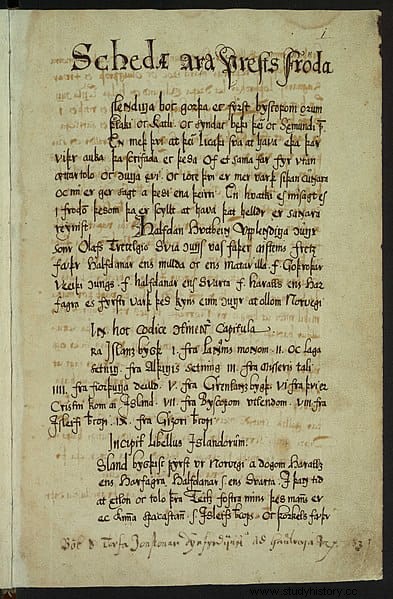
Ari probably had a prominent role in the compilation of the other great bibliographical source, the Landnámabók (Book of the settlement), a manuscript also on parchment that recounts the development of the discovery of the island and those first settlements (landnám ) that spells out its title.
It is precisely the Landnámabók , of which three medieval versions and two transcriptions from the 17th century are preserved, the one that mentions that original stable settler named Ingólfur Arnarson. However, the Íslendingabók places as predecessors the papar , the aforementioned Irish and Scottish missionaries whom the Scandinavians would have encountered upon landing. It is something that perhaps would have support in the work of an Irish monk of the 9th century called Dicuil, who left testimony of the trip of some holy men to the islands; the question is whether he meant Iceland or the other northern archipelagos (Orkney, Shetland, Faroe and Hebrides).
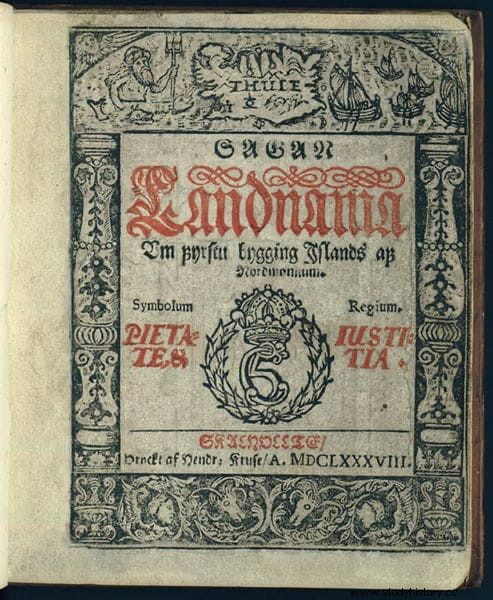
Many historians are reluctant to believe it, as there is no archaeological record that demonstrates the presence of these religious. Of course, there are those who link them to toponyms such as Papey (a small island of two square kilometers located to the west of Iceland) or Vestman (an archipelago near the southern Icelandic coast whose name translates asislands of the men of the west , interpretable as islands of the Celts and that we will deal with later). Therefore, in the absence of material evidence, the focus is on the Vikings.
One, named Naddoddr and from Norway, who would have abandoned an attempt to colonize the Faroe Islands, was the first to stumble upon Iceland by chance, according to the Landnámabók . The discoverer baptized it as Snæland (land of snow), which a few decades later would change to Garðarshólmur (islets of Gardar) the other Viking that we have already mentioned, Garðar Svavansson (and, later, Hrafna-Flóki Vilgerðarson returned it to exchange for Ísland, land of ice). Svavansson, a native of Sweden - although he owned land in Zealand (Denmark) - wintered there (in what is now Húsavik), something that Naddoddr had not done, whose stay on the island was short-lived.
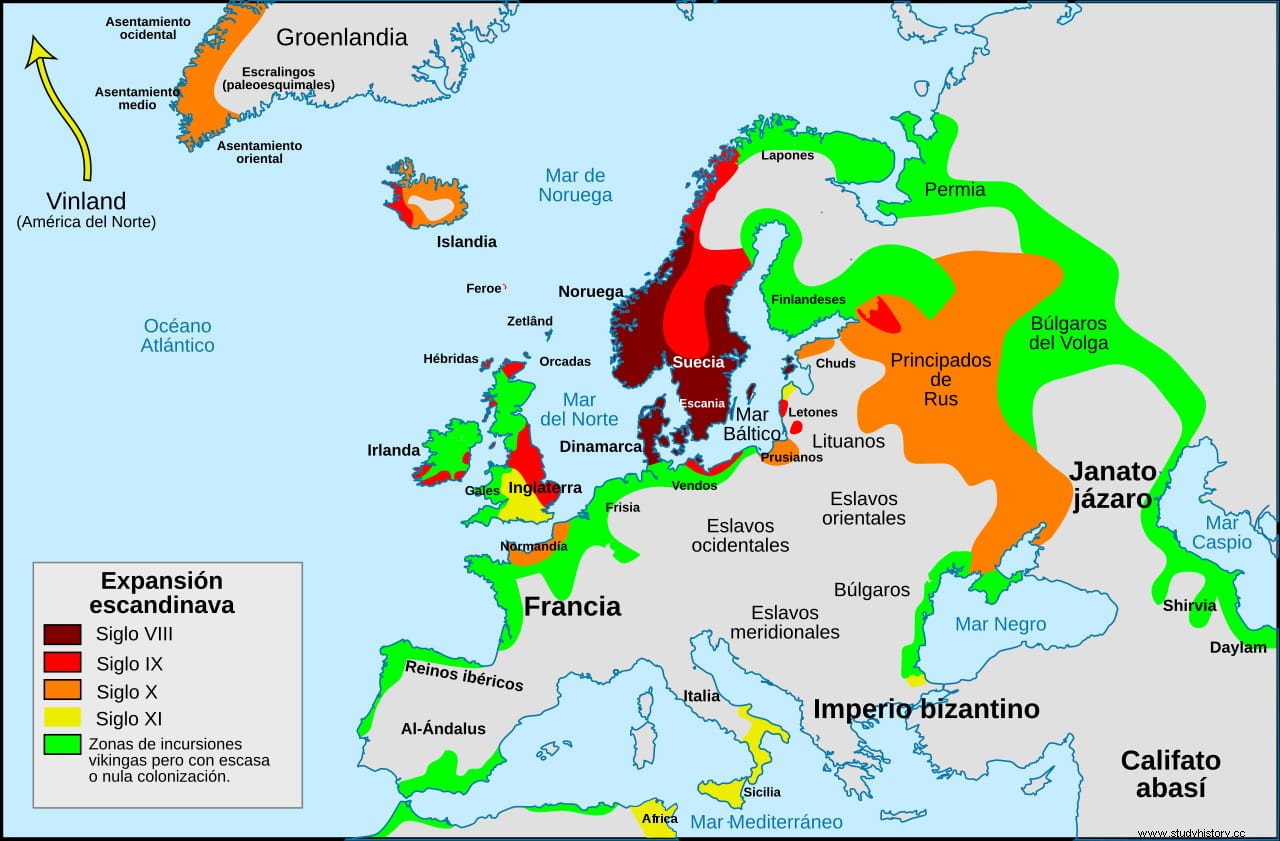
That's why the Hauksbók (a manuscript anthology of other texts - among them a version of the Landnámabók – whose compiler was the 14th-century Icelandic jurist Haukr Erlendsson) considers him to be the true discoverer. The happy event occurred when a storm diverted him from his journey to the Hebrides, where he was going to claim the inheritance of his father-in-law.
Then, when spring came, he returned to his home, leaving a precarious colony in charge of Náttfari, who according to the Hauksbók it was a thrull , that is, a slave but other sources consider him free and well off, which seems more logical.
In fact, the Saga of Reykdæla ok Víga-Skútuse places Náttfari as the owner of Reykjardal, a place chosen to settle following the tradition of the öndvegissúlur (which consisted of throwing the wooden poles that supported the hásæti into the water or seat of honor of Viking chieftains, settling wherever the current carried them):«Náttfari followed the path of Garðar, had acquired Reykjadalur marked by wood in all its extension; when Eyvind found him, he gave a choice, either to have Náttfaravík, or nothing at all «.
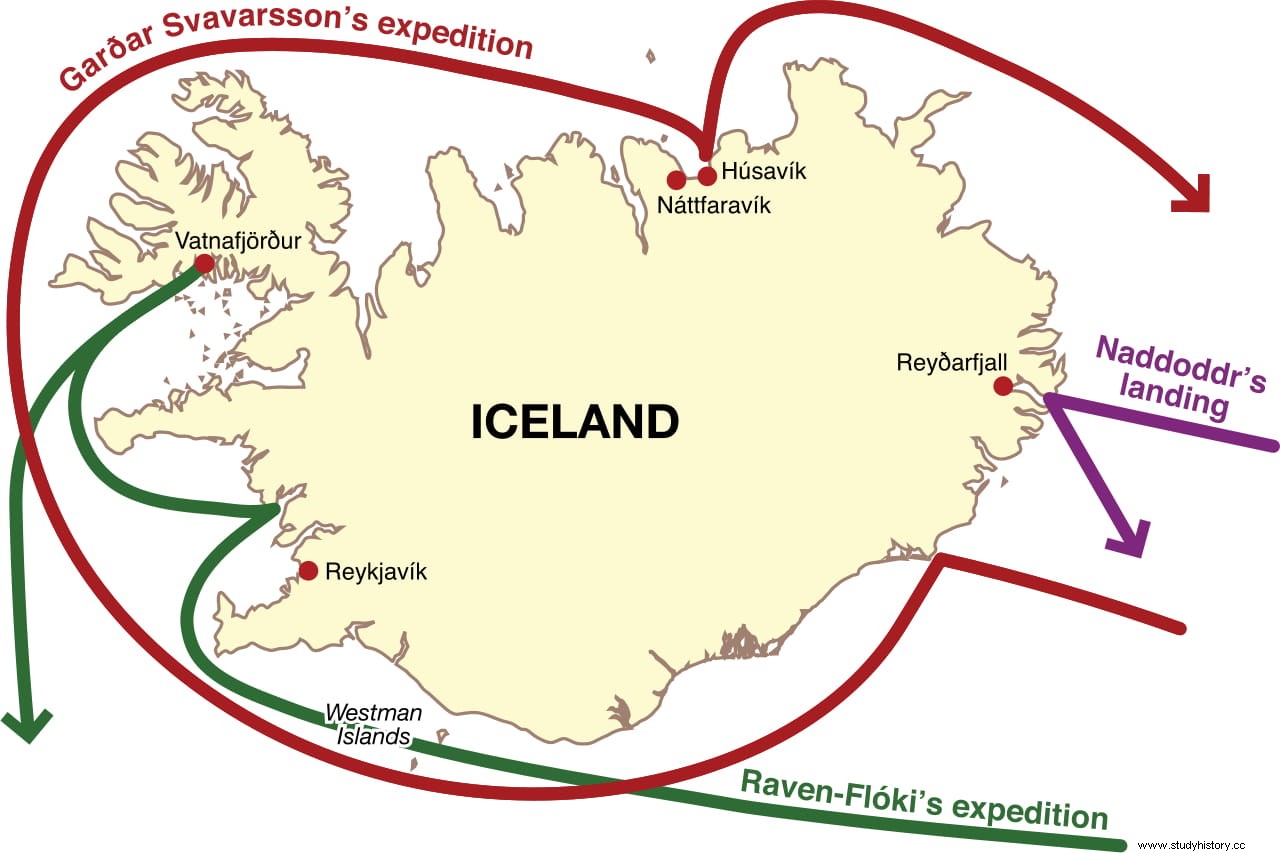
The Landnámabók explains that Náttfari joined Svavansson in exploring Iceland and later parted ways, taking with him two slaves, male and female, with whom he founded a settlement named after him, Náttfaravíkur. There is another version of the latter:while in Reykjardal, another Viking named Eyvindur Þorsteinsson appeared, the son of a Norwegian chieftain, who took over that town and Húsavik, distributing the lands among the members of his clan, founding Helgastaðir and forcing Náttfari to move west, which would be Náttfaravíkur.
The next to set foot on Icelandic soil was the aforementioned Flóki Vilgerðarson, very popular thanks to the television series Vikings . Floki differed from his predecessors in that he did not arrive by chance but, having heard of this new place, he embarked with his people in search of him from Rogaland (Norway). He did not find it easy; Along the way he lost a daughter and married another in the Faroes, where he acquired three ravens that not only gave him his nickname (Hrafna) but also allowed him to sight land when released. He landed at Faxaflói and founded the settlement of Vatnsfjörður in the northwest.
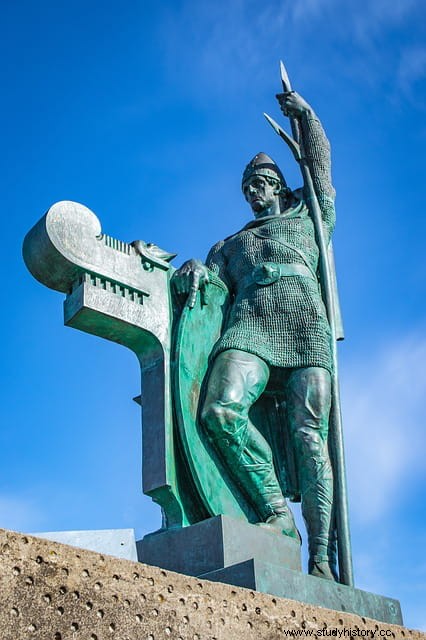
But Floki, like his predecessors, didn't stay either because Iceland didn't seem good to him either for agriculture -it was covered in ice, which is why he called the island with its current name- or for livestock (the harsh winter ended with their herds). Consequently, after a few months he went to sea again and returned to Scandinavia, although he would return to the island many years later. For all these reasons, neither Naddoddr nor Garðar Svavansson nor Floki Vilgerðarson are considered the true settlers of Iceland. That honor belongs to Ingólfur Arnarson, who was the first to stay.
Ingólfur was born in the town of Rivedal, Norway, around the year 849 AD. Some sources add the patronymic Bjǫrnólfsson to him because he was the son of Örn Brynjólfsson and, according to the Landnámabók , paternally great-grandson of Hrómundr Gripsson, a Telemark Viking to whom his own saga, the Hrómundar Gripssonar , was dedicated . Likewise, Ingólfur had a brother-in-law whom he adopted as a half-brother, Leifr, whose name would be extended to Hjörleifr Hróðmarsson by adding the nickname hjörr , meaning sword, after seizing the weapon from an enemy warrior during a raid in Ireland.
The Landnámabók He says that Ingólfur was involved in a dispute, a revenge that affected the family, so he decided to leave in search of a quieter place. He had heard about that Garðarshólmur discovered by Garðar Savavansson and decided that it might be a good place to start a new life, so he embarked there accompanied by his wife, Hallveig Fróðadóttir, Hjörleifr and the whole clan of the. It was the year 874 AD. when he sighted land and proceeded to perform the usual ceremonial that we explained earlier, the öndvegissúlur , throwing overboard the posts of his hásæti .
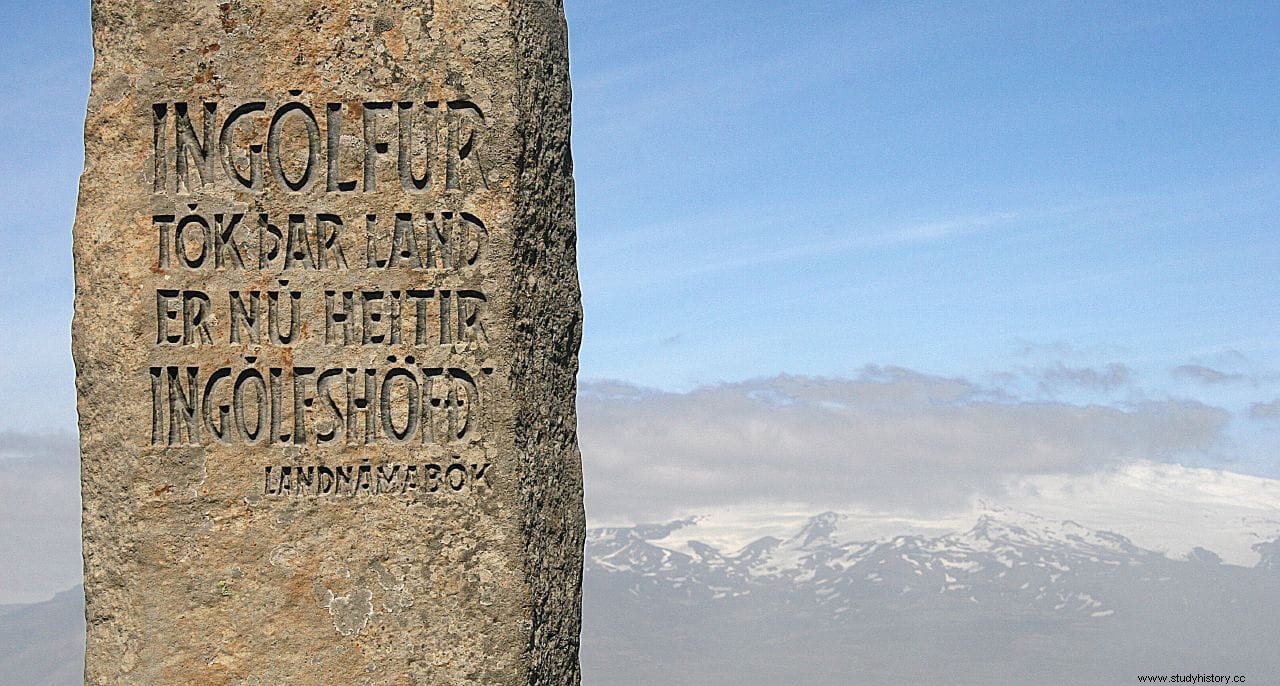
Of course, finding the exact spot where the tide swept them took time. Three years, no less, during which two slaves traveled the Icelandic coastline until they were finally located in a small bay where the island capital, Reykjavik, currently stands. There they settled, since it was assumed that the gods had chosen the site. Thus began the legendary colonization of Iceland, a process that would last until 930 and that was not exempt from turbulent episodes, even in that first phase, because in 875 a tragedy occurred.
Hjörleifr, who had founded his own estate, was killed by his slaves who, under the leadership of one Dufthak, had had enough of his mistreatment. It is not known what nationality these slaves were, but the Landnámabók he refers to them as vestmenn (Westermen), the term by which the Norse called the Gaels and the Irish; considering Hjörleifr's raid on Ireland, the latter seem the most likely option.
The fact is that Ingólfur chased them to a small archipelago located off the south coast of Iceland, today called precisely Vestmannaeyjar (Vestman Islands), and there he finished them off -some preferred to jump off a cliff-, freeing the Viking women who they had brought with them.
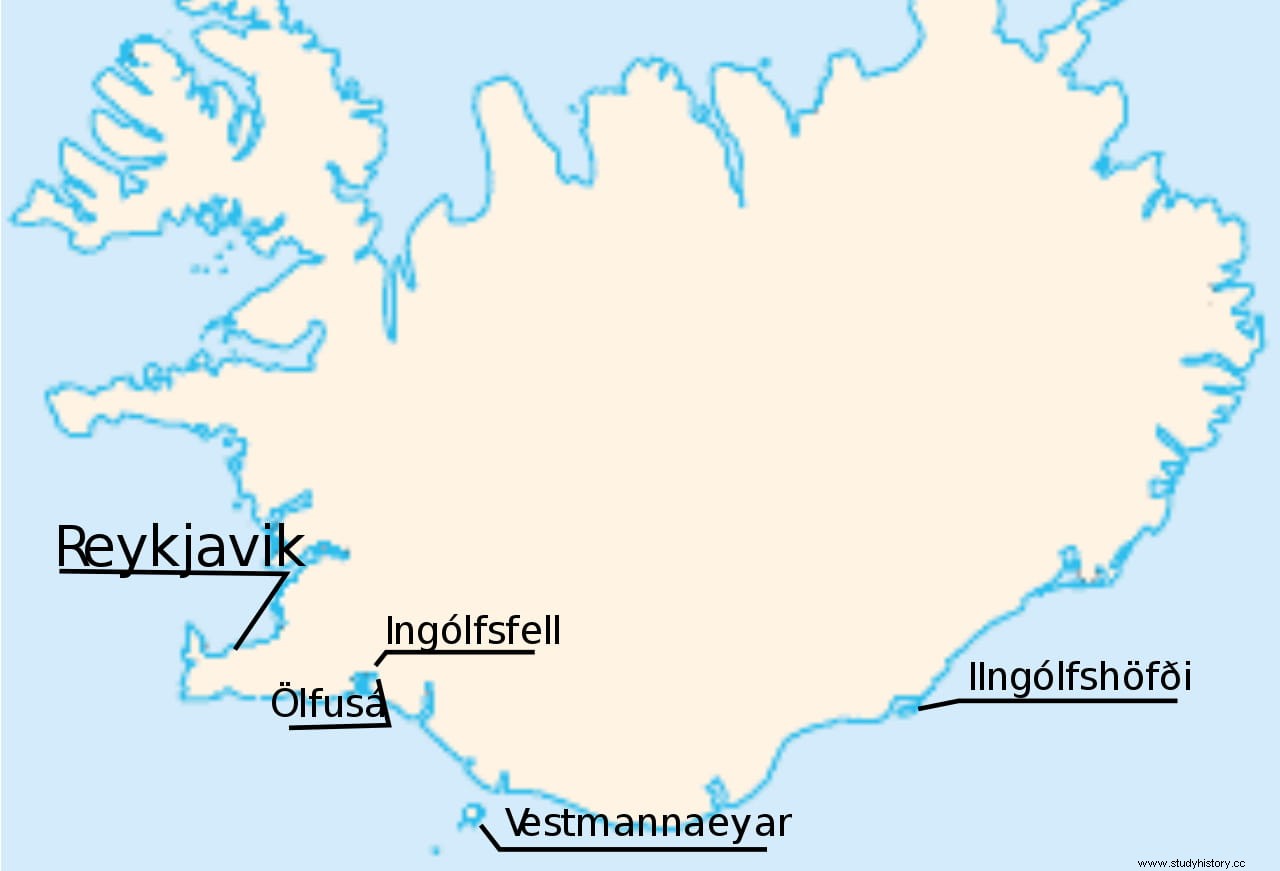
After that chapter, Ingólfur disappears from history and is not mentioned again in the sources except to mention the date of his death, in 910. It follows that, as we said, he was the first to stay in the new land because he was taken over by his son Þorsteinn Ingólfsson, who inherited his father's domains in southwest Iceland, becoming not only an important chieftain but also a lǫgsǫgumaðr or lagman (man of laws, a judicial and political position of an elective nature, of the Scandinavian tradition, which existed in each province).
As such, Torstein -in current spelling- happens to be the creator of the first þing (thing , thing in Spanish), traditional government assembly that brought together the bóndi (free men) in Scandinavian and British society, and which would constitute the antecedent of the Alþingi (Althingi), the national parliament. Historians place the origin of that first þing in 930, when Iceland laid the foundations for its independence from Norway.
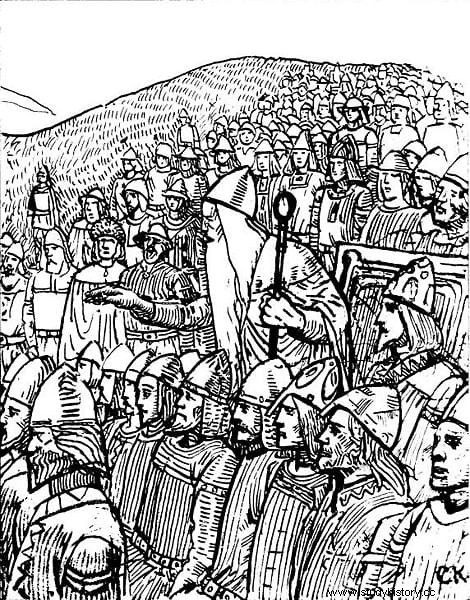
In that sense, you have to go back a bit, to the time when Uni the Dane , son precisely of Garð ar Svavansson, the accidental discoverer of the island. He agreed with King Harald I so that the Icelanders - who had constituted a Þjóðveldisöld or commonwealth - recognized Norwegian sovereignty and him as jarl (a noble title equivalent to count or duke).
Not only did he not make it, but he ended up banished to the southern coast, where he would die at the hands of the local warlord, Leiðólfur the Warrior , when he tried to elope with his daughter.
